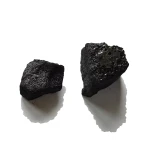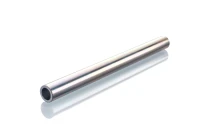- What is meant by the term catalyst support in the context of fuel cells?
- Which function does the catalyst support play in fuel cells?
- What are the common materials used for catalyst support in fuel cells?
- In which way is a high-quality catalyst support able to enhance the performance of fuel cells?
- Is the material used in a fuel cell relevant for its overall performance?
- How does the catalyst support contribute to the durability and lifespan of fuel cells?
- How can the catalyst support affect the cost-efficiency of fuel cells?
- How do catalysts and catalyst supports work together in proton-exchange membrane fuel cells?
- What is the relationship between the catalyst, the support, and the fuel in a fuel cell?
- How can mesoporous catalyst supports enhance fuel cell performance?
- What role does the catalyst support play in reducing carbon corrosion in fuel cells?
- What is meant by the term catalyst support in the context of fuel cells? Which function does catalyst support play in fuel cells?
- What are the common materials used for catalyst support in fuel cells? How does the material used in a fuel cell relevant for its overall performance and lifetime?
- What are some of the challenges in optimizing catalyst support for fuel cells?
- How can mesoporous catalyst supports enhance fuel cell performance and lifetime?
Browse all catalysts from leading suppliers on our marketplace!
What is meant by the term catalyst support in the context of fuel cells?
A proton exchange membrane (PEM) fuel cell is composed of multiple components, including bipolar plates, gaskets and membrane electrode assemblies (MEAs). The MEA is the core component that converts hydrogen and air (oxygen) into electricity that can be used to power electric vehicles or used for stationary electricity sources. An MEA is composed of gas diffusion layers with or without microporous layers, two catalyst layers and a proton exchange membrane as the separator. A catalyst layer is typically made of platinum (Pt) with carbon materials as the catalyst support, and a catalyst layer is where electrochemical reactions occur to generate electricity. In short, the catalyst layer support in fuel cells, which is most commonly carbon, is a high surface area, low cost, conducting material that supports the Pt nanoparticles that catalyze the key reactions that occur at both the anode and cathode.
Which function does the catalyst support play in fuel cells?
The catalyst support provides the surface sites at which the catalytic nanoparticles (e.g. Pt) can attach themselves, as well as serving as the support for the ion-conducting ionomer. The support also provides pathways for electron transport, and thus must be conducting and have excellent particle-to-particle connectivity, while reactant gases move around and through the carbon support material. The catalyst support plays a critical role in achieving both PEM fuel cell performance and durability.
What are the common materials used for catalyst support in fuel cells?
There are many catalysts used in fuel cells but high-surface-area carbon powders (e.g. carbon black) are the most widely used as the catalyst support in PEM fuel cells..

Example: Nanoporous Carbon Powder
In which way is a high-quality catalyst support able to enhance the performance of fuel cells?
The carbon support structure plays a critical role in controlling catalyst particle size, dispersion and their interactions with the ionomer, as well as catalyst durability. The carbon supports that are more stable and that interact most strongly with the catalyst nanoparticles can inhibit catalyst mobility and nanoparticle agglomeration, thus minimizing the resultant loss in surface area and increasing the lifetime of the fuel cell. High-surface-area mesoporous carbons allow the catalytic Pt nanoparticles to disperse better and resist growth and agglomeration. The structure of the mesoporous carbon materials can also be designed to prevent ionomer poisoning of the Pt nanoparticle surfaces, thus enhancing catalyst utilization and improving mass activity and performance.
Is the material used in a fuel cell relevant for its overall performance?
Yes. The catalyst layer significantly impacts a fuel cell’s overall performance. The choice of carbon support is a significant part of this, by affecting catalytic activity, durability, reproducibility, and the cost-effectiveness of a fuel cell.
How does the catalyst support contribute to the durability and lifespan of fuel cells?
A good catalyst support provides mechanical stability to the catalyst, preventing dissolution, detachment, particle agglomeration, and Ionomer poisoning, and thus can lead to significantly improved durability. A stable catalyst support has better corrosion resistance and thus leads to longer lifetime in a fuel cell. A catalyst support that has the desired porous structure or has strong interactions with the catalyst itself can protect the catalytic nanoparticles from dissolving, detachment, and agglomeration, thus further improving the lifetime of the catalyst in a fuel cell.
How can the catalyst support affect the cost-efficiency of fuel cells?
A good catalyst support can enhance the utilisation of the catalyst, especially precious metal catalysts such as Pt. Therefore, less catalyst material is needed, which decreases the manufacturing cost. A well-chosen catalyst also enhances lifetime, which contributes to the reduction in the operation cost for end-users.
How do catalysts and catalyst supports work together in proton-exchange membrane fuel cells?
Catalyst supports provide a structure for anchoring the catalyst materials while also allowing the catalyst materials to disperse evenly over a large surface area, thus increasing the number of total reactive sites and thus leading to higher catalytic activity. High porosity and low tortuosity of the support also enhances mass transport of the reactants (hydrogen and oxygen) and leads to high utilization of the catalyst material while decreasing the mass transport resistance. Mesoporous carbon supports also have the potential to protect the catalyst, especially Pt nanoparticles, from agglomeration, loss of surface area with time, and from poisoning by the ionomer, therefore further increasing the catalyst activity and stability.

What is the relationship between the catalyst, the support, and the fuel in a fuel cell?
The catalyst accelerates the electrochemical reactions that occur in the fuel cell, facilitating the conversion of fuel (usually hydrogen) and oxidant (usually oxygen from air) into electricity and water. The catalyst support enhances the catalyst’s effectiveness by providing stability, high surface area, and electrical conductivity.
How can mesoporous catalyst supports enhance fuel cell performance?
Mesopores are pores that range from 2 to 50 nm in diameter. Mesoporous carbons provide small mesopores that are still large enough to allow the Pt nanoparticles (the catalyst) to be anchored, while at the same time, preventing ionomer from penetrating the pores. Therefore, the catalyst can be protected from ionomer poisoning. Mesopores can also protect against catalyst loss arising from particle detachment while also helping to confine and stabilize the catalytic nanoparticles from further agglomeration. This, in turn, leads to improved durability of the fuel cell.
What role does the catalyst support play in reducing carbon corrosion in fuel cells?
Graphitized carbon has less oxygen content compared to non-graphitized carbons, and thus it is less prone to carbon corrosion during fuel cell operation. However, graphitization weakens the Pt nanoparticle/carbon bond, thus making Pt more susceptible to corrosion.
What is meant by the term catalyst support in the context of fuel cells? Which function does catalyst support play in fuel cells?
A proton exchange membrane (PEM) fuel cell is a type of hydrogen fuel cell that generates electricity through the electrochemical reactions of hydrogen and air (oxygen) and operates at 50-80 °C. The electrochemical reactions occurring in the fuel cell are slow, and thus a catalyst is applied to accelerate the electrochemical reactions, facilitating the conversion of fuel (hydrogen) and oxidant (oxygen from the air) into electricity and water. Platinum (Pt) is the best-known catalyst for PEM fuel cells. However, the high price and scarcity of Pt hinders the wide application of PEM fuel cells. Therefore, reducing the amount of Pt while maintaining high fuel cell performance and lifetime becomes important to make fuel cell applications more economically viable. Carbon materials are therefore introduced as a catalyst support to enhance the catalyst utilization in a fuel cell. The catalyst support provides loading sites for catalytic nanoparticles (e.g. Pt) and pathways for both electron and reactant gases to transfer. The catalyst support enhances the catalyst’s effectiveness by providing stability, high surface area, and electrical conductivity. The catalyst support thus plays a critical role for PEM fuel cell performance and durability.
What are the common materials used for catalyst support in fuel cells? How does the material used in a fuel cell relevant for its overall performance and lifetime?
The most common catalyst supports commercially available are carbon black, such as Vulcan carbon and Ketjen Carbon, which have high surface area, abundance and low cost. They provide a structure for anchoring the catalyst materials that allows the catalyst materials to disperse in a large surface area, increasing reactive sites and thus leading to higher catalytic activity.
Nowadays, a catalyst layer in a PEM fuel cell is usually manufactured by mixing the catalyst-loaded carbon black (e.g. Pt/C) with the ionomer that serves as the binder and proton transport pathway. The catalyst layer significantly impacts a fuel cell’s overall performance. The choice of carbon supports affects catalytic activity, durability, reproducibility and cost-effectiveness of a fuel cell. A good catalyst support provides mechanical stability to the catalyst, preventing dissolving, detachment, and agglomeration, and thus leads to improved durability.
A good catalyst support can enhance the utilization of the catalyst, especially the precious metal catalyst such as Pt. Therefore, less catalyst material is needed, which decreases the manufacturing cost. A well-chosen catalyst support also enhances lifetime, which contribute to the reduction in the operation cost for the end-users. A stable catalyst support has better corrosion resistance and thus lead to longer lifetime in a fuel cell. The catalyst support that has a desirable porous structure or strong interaction with the catalyst could protect catalyst nanoparticles from dissolving, detachment, and agglomeration, further improving the lifespan of the catalyst in a fuel cell.
What are some of the challenges in optimizing catalyst support for fuel cells?
The conventional catalyst layer made with platinum-loaded carbon black poses challenges to the long-term stability and flexibility of PEM fuel cells under various conditions. Carbon blacks are particles with diameters ranging from tens to hundreds of nanometers. Pt nanoparticles are typically deposited on the surface of the carbon particles, akin to glitters on a cake pop. During fuel cell operations, the Pt particles and the carbon particles are subjected to various forms of degradation. Pt particles may easily detach from the carbon surface, losing their activity. Some Pt particles aggregate to form larger particles, resulting in a reduction of Pt surface area and decreased activity. The random stacking of carbon black particles leads to unstable channels within the catalyst layer that are susceptible to changes in various pressure and relative humidity, thus causing unstable cell performance.
Increasing durability without compromising the catalyst activity is the goal of developing a good catalyst support. The carbon support structure plays a critical role in catalyst particle size, dispersion and interaction with the ionomer, as well as catalyst durability. The supports that are more stable and that interact more strongly with catalyst particles can inhibit catalyst mobility and largely increase lifetime of the fuel cell. Graphitized carbons have shown decreased carbon corrosion, but they have lower surface areas than non-graphitized supports and thus suffer from inadequate catalyst disperse and stability.
How can mesoporous catalyst supports enhance fuel cell performance and lifetime?
High-surface-area mesoporous carbon is a carbon material with pore sizes ranging from 2 to 50 nanometers. Mesoporous carbon provides small pores for catalyst to anchor and well disperse, and it may also prevent ionomer poisoning on the catalyst, enhancing catalyst utilization and improving mass activity and performance.
The Nanoporous Carbon Powder (NCP SupportsTM) is a mesoporous carbon material that with a 3-dimensionally interconnected structure and controllable pore sizes. Its high porosity and low tortuosity enhance mass transport of the reactants (hydrogen and oxygen) and lead to high utilization of the catalyst material while decreasing the mass transport resistance.
Unlike the glitters on a cake pop, Pt loaded within (NCP SupportsTM) is like bees in a honeycomb. The mesopores protect the catalyst from detachment and provide certain confinement to prevent further aggregation, leading to higher durability of the fuel cell. Mesopores could also protect the catalyst, especially Pt, from being poisoned by ionomers, further increasing catalyst activity and stability. Additionally, the (NCP SupportsTM) can enhance the mass transport of reactants and products to and from the catalyst surface, improving the fuel cell’s efficiency and overall performance and longevity of the catalyst.
Graphitized carbon has less oxygen content compared to non-graphitized carbons, and thus is less prone to carbon corrosion due to oxidation reactions during fuel cell operation. The (NCP SupportsTM) can be heat treated and even further graphitized to improve their carbon corrosion resistance for higher durability.
Content contributed by Momentum Materials Solutions
Momentum Materials Solutions has developed novel nanoporous carbon powder products that improve performance and more than double durability for PEMFC catalysts and MEAs.They have a diverse technical team with expertise in chemical engineering, materials science and fuel cell applications. The company is based out of Calgary, Canada, and offers a wide range of materials to ship worldwide. They are offering the hydrogen economy advanced materials to improve MEA performance and more than double the operational lifetime of fuel cells.
Last update: 15.02.2024








